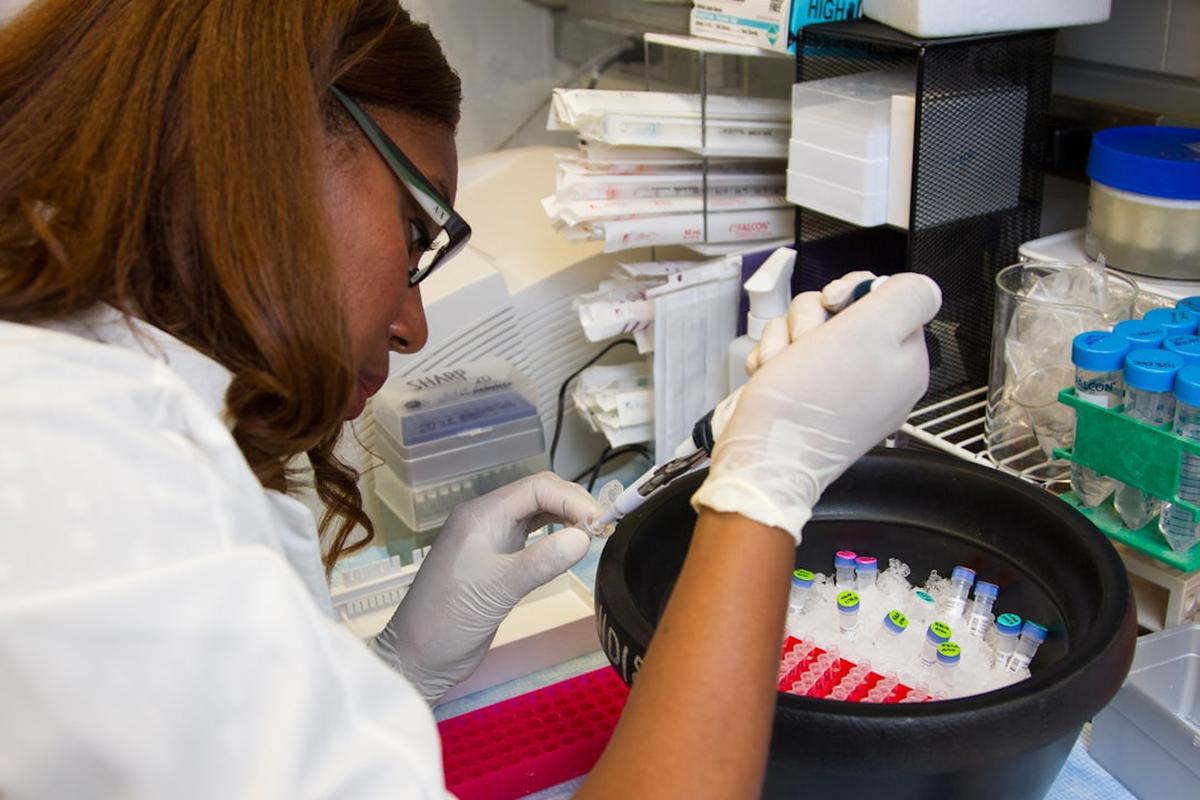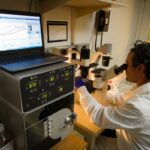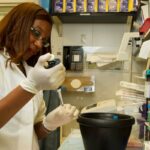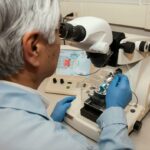DNA, the blueprint of life, carries the genetic instructions used in the growth, development, functioning, and reproduction of all known living organisms. The importance of DNA in forensic science cannot be overstated. It serves as a unique identifier, a biological fingerprint that can link a person to a crime scene or confirm relationships in paternity cases.
Understanding the Basics: DNA in Bodily Fluids and Tissues
DNA is found in almost every cell in the human body. It is present in bodily fluids such as blood, semen, and saliva, which are often used in forensic investigations. DNA is also found in tissues, organs, and muscles, including skin cells, which can be left behind in the form of fingerprints or skin fragments.
Even in the brain cells, bone, teeth, and hair, DNA is present. For instance, a single strand of hair can provide enough DNA for forensic analysis. Teeth and bones, being more durable, can preserve DNA for a longer period, making them valuable in archaeological and historical investigations.
Unconventional Sources of DNA: Fingernails, Urine, and Perspiration
In addition to the conventional sources, DNA can also be found in less obvious places. Fingernails, for example, can contain DNA from the cells of the nail bed. Similarly, urine can contain DNA from cells shed from the urinary tract. Even perspiration can contain DNA, although in much smaller quantities.
The Core Question: Do Feces Contain DNA?
Fecal matter, or stool, is primarily composed of water, undigested food, bacteria, and cells shed from the gastrointestinal tract. So, do feces contain DNA? The answer is yes. Feces do contain DNA, primarily from the cells shed from the gastrointestinal tract and the bacteria that inhabit it.
The Role of Gut Microbiota in Fecal DNA
The human gut is home to trillions of bacteria, collectively known as the gut microbiota. These bacteria play a crucial role in digestion, immunity, and overall health. They also contribute significantly to the DNA found in feces. In fact, the majority of the DNA in feces comes from these gut bacteria.
DNA Extraction from Feces: Techniques and Challenges
Extracting DNA from feces is a complex process. Common techniques involve breaking open the cells to release the DNA, then separating it from the other components of the feces. However, this process can be challenging due to the presence of substances in feces that can inhibit DNA extraction or degrade the DNA.
Fecal DNA in Forensic Science
Despite the challenges, fecal DNA has potential in forensic science. For instance, it can be used to identify a suspect if fecal matter is found at a crime scene. There have been cases where fecal DNA has provided crucial evidence, leading to the conviction of criminals.
Ethical and Legal Considerations in Fecal DNA Analysis
However, the use of fecal DNA in forensic science raises ethical and legal issues. Privacy concerns arise as fecal DNA can reveal sensitive information about a person’s health and lifestyle. Moreover, legal regulations around fecal DNA analysis vary from country to country, adding another layer of complexity.
Future Perspectives: Fecal DNA in Health and Disease
Beyond forensics, fecal DNA has potential in health and disease. It can be used to diagnose gastrointestinal diseases, such as colorectal cancer, by detecting abnormal DNA in the feces. Furthermore, as our understanding of the gut microbiota grows, fecal DNA could play a role in personalized medicine, helping to tailor treatments based on an individual’s unique gut bacteria.
Concluding Remarks
Concluding Remarks, while often overlooked, fecal DNA holds significant potential in both forensic science and medicine. As research progresses, we can expect to see more applications of fecal DNA, shedding light on the mysteries of our gut and potentially revolutionizing healthcare.
Frequently Asked Questions
What is DNA?
DNA, or deoxyribonucleic acid, is the molecule that carries the genetic instructions for the development, functioning, growth, and reproduction of all known organisms.
Where is DNA found in the human body?
DNA is found in almost every cell in the human body. It is present in bodily fluids such as blood, semen, and saliva, as well as in tissues, organs, muscles, brain cells, bone, teeth, and hair.
Can DNA be found in feces?
Yes, feces do contain DNA, primarily from the cells shed from the gastrointestinal tract and the bacteria that inhabit it.
How is DNA extracted from feces?
Extracting DNA from feces involves breaking open the cells to release the DNA, then separating it from the other components of the feces. This process can be challenging due to the presence of substances in feces that can inhibit DNA extraction or degrade the DNA.
What are the potential applications of fecal DNA?
Fecal DNA has potential in both forensic science and medicine. It can be used in crime scene investigations, to diagnose gastrointestinal diseases, and potentially in personalized medicine.
What are the ethical and legal considerations in fecal DNA analysis?
Fecal DNA analysis raises ethical and legal issues. Privacy concerns arise as fecal DNA can reveal sensitive information about a person’s health and lifestyle. Legal regulations around fecal DNA analysis also vary from country to country.
References:
- Butler, J. M. (2015). Advanced Topics in Forensic DNA Typing: Interpretation. Academic Press.
- Jobling, M. A., Gill, P. (2004). Encoded Evidence: DNA in Forensic Analysis. Nature Reviews Genetics, 5(10), 739–751.
- Knights, D., Kuczynski, J., Charlson, E. S., Zaneveld, J., Mozer, M. C., Collman, R. G., Bushman, F. D., Knight, R., Kelley, S. T. (2011). Bayesian community-wide culture-independent microbial source tracking. Nature Methods, 8(9), 761–763.
- Penders, J., Stobberingh, E. E., Savelkoul, P. H., Wolffs, P. F. (2013). The human microbiome as a reservoir of antimicrobial resistance. Frontiers in Microbiology, 4, 87.
- Quince, C., Walker, A. W., Simpson, J. T., Loman, N. J., Segata, N. (2017). Shotgun metagenomics, from sampling to analysis. Nature Biotechnology, 35(9), 833–844.








